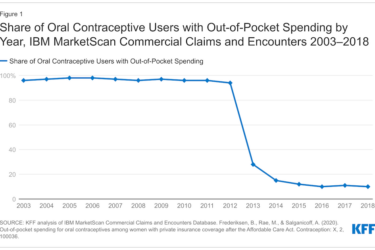 One issued we pursued during the AHCJ webcast last month (The cost of health care: Is transparency possible?) is whether price transparency will drive costs up or down.
One issued we pursued during the AHCJ webcast last month (The cost of health care: Is transparency possible?) is whether price transparency will drive costs up or down.
The members of our panel reported that price transparency will cause providers to drop their prices, and now new research shows that when reference pricing is combined with price transparency, costs tend to decline as well.
A reference pricing initiative in California motivated hospitals to reduce prices for hip and knee replacements, according to a study released earlier this month by the Center for Studying Health System Change. HSC conducted the research for the National Institute for Health Care Reform.
The HSC report, “Potential of Reference Pricing to Generate Health Care Savings: Lessons from a California Pioneer,” showed that when the California Public Employees’ Retirement System (CalPERS) introduced reference pricing for patients seeking hip and knee replacements, the initiative had two positive results. First, it helped steer patients to lower-price hospitals, and second, it motivated hospitals to reduce prices for these joint replacement procedures.
Reporting on the study for Kaiser Health News, Ankita Rao explained that CalPERS designated certain hospitals that could meet a target threshold price for hip or knee replacement surgery of $30,000. When patients chose the facilities that charged $30,000 or less, they paid only their typical deductible and coinsurance amounts up to their out-of-pocket limits.
But patients who chose other hospitals that charged more than $30,000 for the procedure were responsible for paying their typical deductibles and coinsurance amounts and also for all costs over $30,000 even if those costs were above their out of pocket limits.
The study showed that under the reference pricing program, CalPERS saved $2.8 million and patients saved $300,000 in avoided cost sharing, HSC said.
One interesting element of the study is that prices for hip and knee replacement surgery in California ranged from $15,000 to $110,000, Ron Shinkman reported for FierceHealthFinance. After the program started, nine California hospitals agreed to reduce their prices and others agreed to waive charges above $30,000, he wrote.
While reference pricing is rarely used, perhaps more employers and health plans will recognize its potential and the need for such strategies in the coming years as more employees and family members assume a larger share of health care costs. If so, consumers no doubt would welcome more transparency and reference pricing.
So the remaining question is this: Does price transparency without reference pricing affect what providers charge? Earlier this year, Forbes columnist Dan Munro argued that while exorbitant hospital prices are provocative, they are nonetheless “well founded on hardcore economic realities.”
In other words, hospitals need to charge high prices to survive and are not likely to charge less even if price transparency initiatives proliferate. Interestingly, Munro returned to the subject in December and made a compelling case that price transparency was the health care story of the year.
For journalists seeking more information on price transparency, see the links provided on our webcast page.
(Editor’s note: Watch Covering Health for some thoughts on the unintended consequences of price transparency from Joe Rojas-Burke.)









